Carriganard
Houses within 5km of this house
Displaying 32 houses.
Houses within 5km of Carriganard
Displaying 32 houses.
| House name | Description | |
|---|---|---|
| Sionhill House | Rev. Alexander Alcock was leasing this property from the Pope estate at the time of Griffith's Valuation when it was valued at £46 10s. It is still extant and famous for its gardens which are open to the public at certain times as well as offering guest accommodation. |
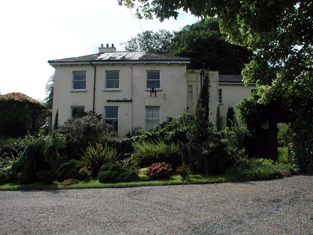
|
| Rockland House | Rockland House, now the Athenaeum Hotel, was leased by the Ray family to William Snow at the time of Griffith's Valuation. It was valued at over £52. The hotel history indicates it was built in the early nineteenth century by the White family who had major shipbuilding interests in Waterford at that time. See www.athenaeumhousehotel.com for more information. | |
| Newrath House | A house later associated with the Morris family. At the time of Griffith's Valuation, Newrath seems to have been occupied by Amelia Hobbs, leasing from the Corporation of Waterford. The house was valued at £32. It is still extant and in 2012 the house was offered for sale. |
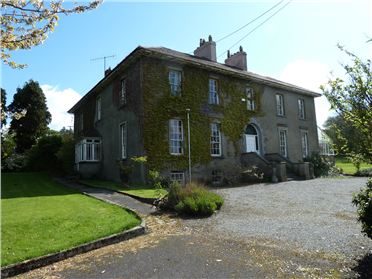
|
| Butlerstown House (Middlethird) | Edward T. Power was leasing this house from Richard Duckett at the time of Griffith's Valuation when it was valued at £11 15s. This house is longer extant. | |
| Butlerstown Castle | The Sherlock family had been in possession of Butlerstown Castle and estate since the 1560s. Wilson, writing in 1786, refers to Butlerstown as the seat of Thomas Sherlock. In the 1790s a disastrous fire saw much of the property destroyed and subsequently the family moved to county Kilkenny although they continued to hold estates in the area. At the time of Griffith's Valuation, it was the property of Robert Backas, three generations of whose family lived at Butlerstown, before departing at the end of the 1850s. Between then and the 1880s Butlerstown was occupied by Samuel Ferguson. In 1894 Slater refers to the property as the seat of Thomas Prendergast. Only the ruin of the castle survives but the Coachhouse is in use as Guest Accomodation. | |
| Carrickphierish A | Paul Heney was leasing this property from Waterford Corporation at the time of Griffith's Valuation when it was valued at £15 10s. | |
| Knock House (Waterford) | Andrew Ryan was leasing this property from Waterford Corporation in 1850 when it was valued at £18. | |
| Lismore House (Waterford) | Leased by Francis O'Grady from Waterford Corporation in 1850 when it was valued at £13. | |
| Carriganore House | John Strangeman was leasing this property from the Corporation of Waterford in 1850 when it was valued at £22. It now forms part of the Western Campus of Waterford Institute of Technology. |
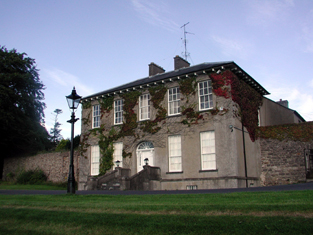
|
| Killoteran House | William Scully was leasing this property from Edward Roberts in 1850 when it was valued at £34. It is still extant and occupied. |
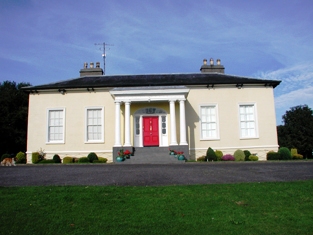
|
| Gracedieu House | James Kearney was leasing this property from James Anderson in 1850 when it was valued at £22. In 178 Wilson refers to Grace Dieu as the seat of Mr. Morris. It is named as Gracedieu House on the 25-inch Ordnance Survey map of the 1890s but is no longer extant. | |
| Whitfield Court | In 1850 William Christmas held Whitfield in fee when it was valued at £49. The National Inventory of Architectural Heritage indicates the house was built by him between 1820-1849, replacing an earlier house. Local sources indicate that this earlier house was in the townland of Whitfield and the name was transferred to the existing house when it was built in the adjacent townland of Dooneen. Leet records the earlier property as the seat of Thomas Christmas in 1814. Smith, writing in 1774, mentions the house as "an elegent seat belonging to Thomas Christmas, formerly a Dobbyn castle". In 1786 Wilson refers to Whitfield as the seat of William Christmas. The nineteenth century house is still extant but no longer occupied. |
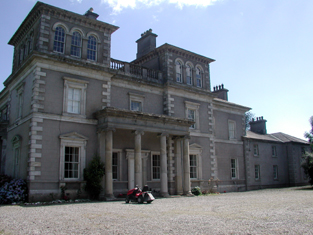
|
| Pembrokestown House | The house at Pembrokestown probably came into the Esmonde family through the marriage, in the eighteenth century, of Sir James Esmonde, seventh baronet, to Ellice White, daughter of Thomas White, of Pembrokestown. In 1814 Leet refers to it as the seat of William Power. At the time of Griffith's Valuation, in 1850, it was held in fee by Mrs. Anne Esmonde, and valued at £21. In 1894 Slater refers to it as the seat of Patrick W. Power. A house is still extant at Pembrokestown. It was offered for sale in 2025. |
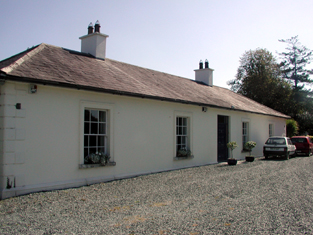
|
| Mount Congreve | Built and owned by the Congreve family from the mid-eighteenth century. Wilson states that it was "the pleasant seat of John Congreve" in 1786. Leet refers to it as the seat of Captain Fleming in 1814. At the time of Griffith's Valuation, in 1850, Mount Congreve was held in fee by John Congreve, when it was valued at £68 10s. It is still extant though a sale of the house contents took place on the premises in July 2012. |
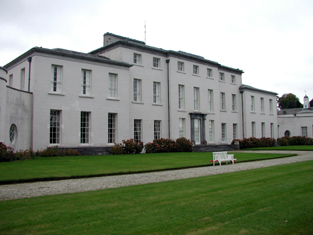
|
| Rock View /Airmount House | Thomas Pope was leasing this property to Rev. Martin Flynn in 1850 when it was valued at £31. It is labelled Rock View on the 1st edition Ordnance Survey Map but as Airmount House on the later 25-inch edition. Later the property of the Mahony and MacDonald families. |

|
| Summerland | Leased by the Corporation of Waterford to Samuel Strangeman in 1850 when it was valued at almost £40. A building is still extant at the site. | |
| Rathfadden Cottage | In1850 this property was leased by Joshua W. Strangeman from the Corporation of Waterford. | |
| Prospect Lodge (Waterford) | Henry Bolton was leasing this property to Michael Ardagh at the time of Griffith's Valuation when it was valued at £22. It is still extant though perhaps not currently in use. |
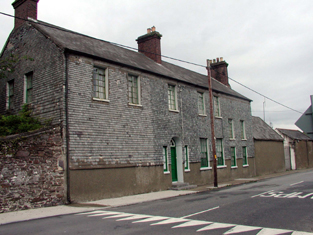
|
| Manor of St. John (Roanmore) | Thomas Wyse is recorded as the lessor of this property in 1850 when it was vacant and valued at almost £32. . In 1814 Leet also noted it as the seat of Thomas Wyse. The house at the site is labelled Roanmore on the 1st edition Ordnance Survey map. A much larger property, labelled St. John's Manor, appears on the 25-inch edition of the 1890s. This house was constructed in the nineteenth century to replace an ancient manor at the site, also belonging to the Wyse family. The building is still extant and now the focus of a Youth Services Project. |
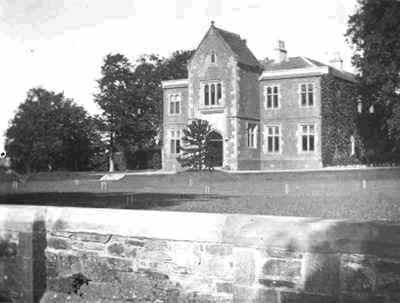
|
| Carrickphierish or Fairview | At the time of Griffith's Valuation, in 1850, this house was occupied by Owen Carroll leasing from Lawrence Roarke. The property was valued at £16. In 1881 the sale of Power property in the Land Judges Court includes a house at this location, described as "fit for the immediate reception of a gentleman's family". No longer extant. | |
| Williamstown House | David O'Neill Power was the lessor of several properties in the townland of Williamstown in 1848. This property, though valued at only £4 10s, appears as Williamstown House on the 6-inch Ordnance Survey map. However, it has disappeared by the publication of the 25-inch Ordnance Survey map of the 1890s. In 1848 it was leased to John W.Pons. Writing in 1774, Smith mentions Williamstown House as the seat of Mr. Fitzgerald. | |
| Williamstown Power | At the time of Griffith's Valuation, Edmund Power (senior) was leasing a property valued at £10 15s from the O'Neill Power estate. At the same time Edmund Power (junior) was leasing a property valued at 11 14s. | |
| Ballinamona Park [House] | In 1848 Ballinamona was held in fee by Thomas Carew when it was valued at £51. In 1814 Leet notes it as the residence of Robert Carew. Lewis refers to it as the seat of T. Carew in 1837. Smith, writing in 1774, describes it as a "well-built house" while Wilson, writing twenty years later refers to it as " a beautiful seat with large demesnes". Brady notes that it was rebuilt following a fire in the late nineteenth century. By 1906 it was owned by Robert Thomas Carew (jun) and valued at £70. It is still extant. | |
| Grace Dieu | This house is labelled on the 25-inch Ordnance Survey map of the 1890s as Grace Dieu. In 1848 it was leased by James Anderson from the Carew estate and valued at almost £49. In 1786 Wilson refers to Upper Grace Dieu as the seat of Mr. Anderson. It is still extant and run as a retreat centre by a religious order. |
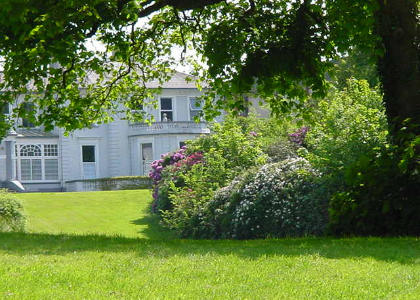
|
| Kilbarry (Gaultiere) | John Hartry was leasing this property from the Lane-Fox estate at the time of Griffith's Valuation, when it was valued at £12 5s. The property is no longer extant and major modern development has taken place in the area. | |
| Ballyhoo | William Hurley was leasing this property from the Lane-Fox estate in 1848 when it was valued at almost £12. Modern buildings exist at the site now. | |
| Couse Mill | Richard Power was leasing this property from David O'Neill Power at the time of Griffith's Valuation, when it was valued at £22 and included a mill. The mill is labelled on the 1st-edition Ordnance Survey Map but does not appear on the later 25-inch edition of the 1890s. | |
| Ozierbank House | Mrs. Hannah Palmer was leasing this property from the Leper Hospital Trustees in 1848, when it was valued at £16 10s. It is labelled as Ozierbank House on the 25-inch Ordnance Survey map of the 1890s. The building is no longer extant. | |
| Ballytruckle (Waterford) | In 1848, Baron Lefroy is recorded as the lessor of a property at Ballytruckle, barony of Gaultiere, county Waterford. This is possibly Thomas Langlois Lefroy, of Carrigglas, county Longford, Baron of the Exchequer. He had married Mary Paul, of Silver Spring, county Wexford. The house at Ballytruckle was leased to Mrs. Ellen Alcock and valued at £13. The site is now occupied by modern buildings. | |
| Prospect House (Gaultiere) | Westerna Lewis was leasing this property from the representatives of M.Hayes at the time of Griffith's Valuation, when it was valued at £29 15s. A small building is shown on the 1st edition Ordnance Survey map but a more substantial one, labelled Prospect House, appears on the 25-inch map of the 1890s. A house is still extant at the site. | |
| Ballycar (Cove) | George Gibsen was leasing a property at Cove from John Purcell Fitzgerald in 1848 when it was valued at £15. This may be the house, built after the 1st Ordnance survey and labelled on the 25-inch map of the 1890s as Ballycar House. The property at the site is now used as offices. |
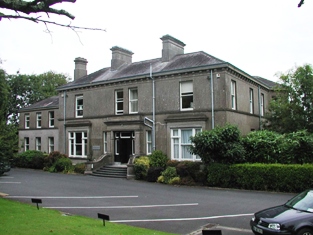
|
| John's Hill House | Occupied by Captain Simon Newport at the time of Griffith's Valuation, when it was valued at £28. Newport was leasing it from his wife's uncle, Robert H. Paul. It is labelled Bishop's House on the 25-inch Ordnance Survey Map of the 1890s when it had become the residence of the Roman Catholic bishops of Waterford and Lismore. |

